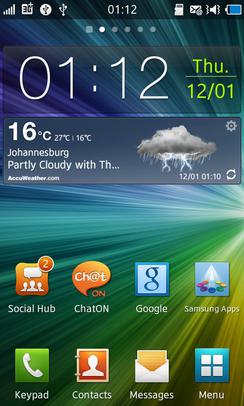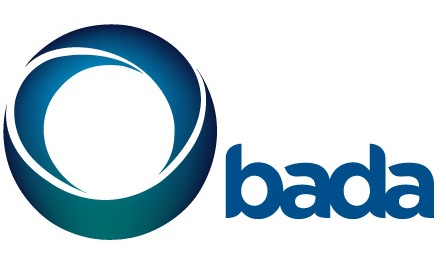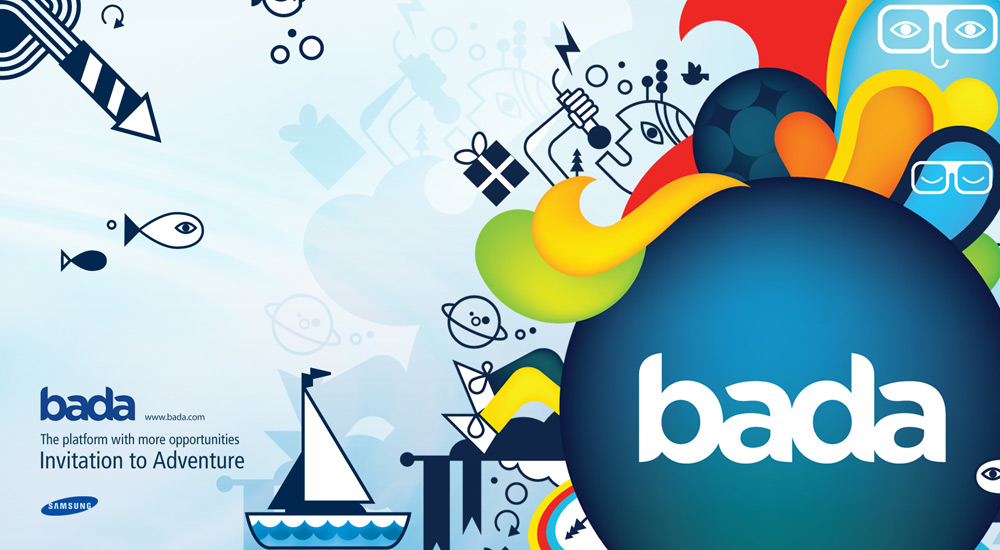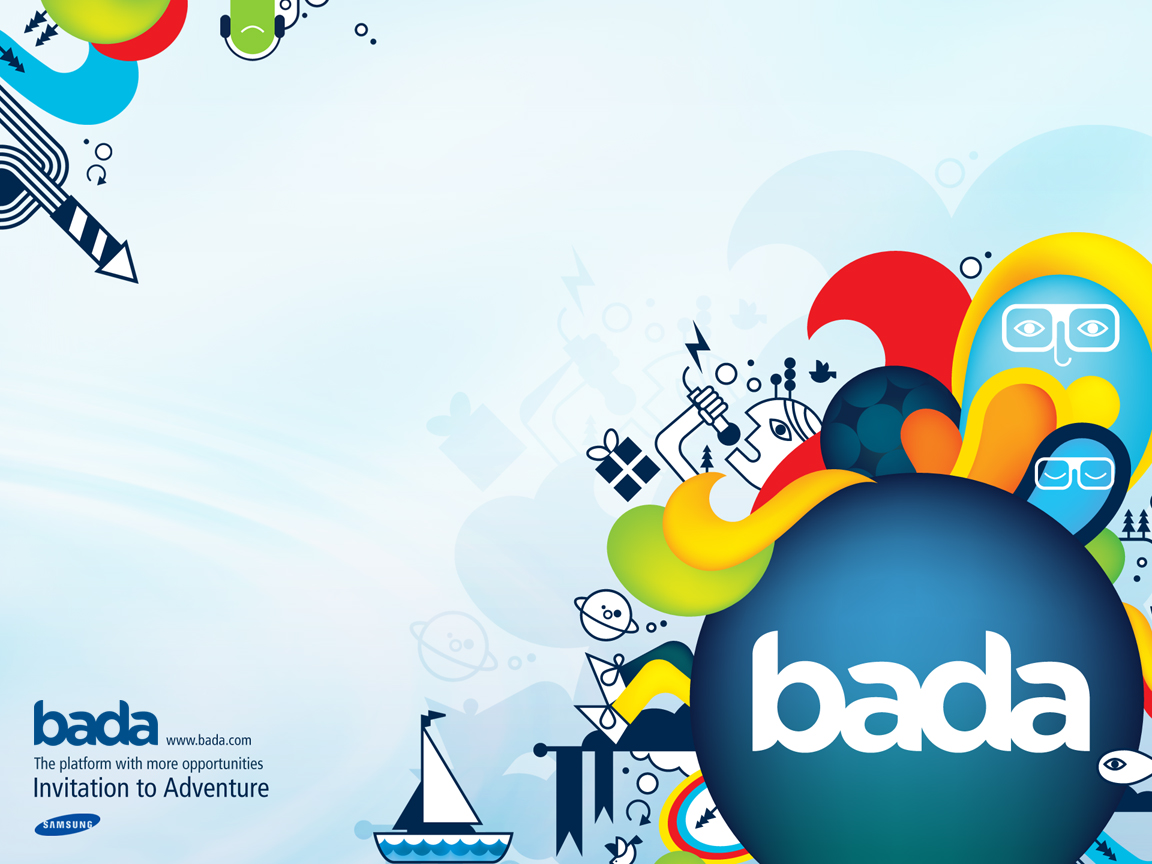Bada
Bada bada or (proper spelling with small letters, at the beginning of the word ) is an operating system for mobile devices. The name is a replica of the Korean word " 바다 " for ocean or sea of letters of the modern Latin alphabet. The operating system developed by Samsung Electronics and from 2010 to 2013 in his marked by the nickname " Wave" smartphone in Asia and Europe used (not in the U.S.).
As the first mobile phone with Bada appeared in April 2010, the flagship model Samsung Wave S8500. Two direct successor in the high-end range, various models in the medium price segment, most recently also low-end devices, followed by the end of 2012. Samsung in February 2013 announced that it would no longer continue to develop the operating system. Parts of the system and the Bada Apps Samsung brought into the Intel and the Linux Foundation launched and also Linux-based successor operating system Tizen.
History
Introduction and early success
Bada was announced in the fall of 2009 and officially introduced in December 2009, together with a Software Development Kit ( SDK) in London. As the first mobile phone based on Bada Samsung Wave S8500 presented the at the GSMA Mobile World Congress 2010 in Barcelona. End of May 2010 came the unit in Asia and Europe market. Compared to the competition, it stood out due to flat construction and the use of a touch screen in " Super AMOLED technology" out, which could indicate a force at this time as a high resolution of 480 × 800 pixels. In quick succession three more devices appeared, and in October of the same year brought with the Samsung Wave II S8530, the fifth unit, a new flagship model out on a factory- enhanced Bada version 1.2 was installed.
On 14 February 2011 Samsung announced the upcoming model Wave 578 will equipped with a chip for Near Field Communication ( NFC).
The support of NFC, the ability of the devices without an access point to communicate with each other over Wi-Fi, and last but not least multitasking between applications would be introduced with Bada version 2.0, which should be completed by September 2011.
Bada 2.0
Great expectation was of the announced new version of the operating system. At the IFA 2011 in Berlin Samsung had announced, Bada 2.0 will be available only on newly launched smartphones and for the three premium models. About Twitter Bada developer gave then known, however, an update to Bada 2.0 will appear by the end of the year for all Wave smartphones. From July 2011, appeared on the Internet on multiple illegal beta versions for the Wave II S8530, then the S8500 Wave.
Until the end of 2011 appeared three devices with pre-installed version 2.0, most notably the Samsung Wave III S8600, again a successor to the flagship models. However, the official distribution of the software for the older models over gravel was delayed to February ( Wave II S8530 ) and March of 2012 (Wave S8500 ). For the Wave 525 and 544, the release of a new operating system version was canceled because the hardware is too weak in December. Samsung announced as a replacement to a value package. When finally the Wave 723 its new software received in November 11, 2012 with nearly a year's delay over the gravel update utility, Samsung had already declared its intention to integrate its Bada operating system into Tizen.
Setting of the development
In February 2013, the developments for Bada was officially stopped. Other Versions ( Bada 3.0) there should be no more. On 30 May 2013, the so-called " Bada Premium Support Service" was set for developers and the latest Bada devices in the so-called "Remote Test Lab " decommissioned. The burgeoning hope Samsung will now underway to bring Tizen on the Wave devices, was not fulfilled. After this announcement Badas market share fell sharply and was already in the second quarter of 2013, less than one percent.
Architecture
Bada is based on Linux and is made up of four layers:
Devices
Smartphones with Bada OS installed:
- Samsung Wave S8500
- Samsung Wave II S8530
- Samsung Wave III S8600
- Samsung Wave 525 S5250
- Samsung Wave 533 S5330
- Samsung Wave 575 S5750
- Samsung Wave 578 S5780
- Samsung S7230E Wave 723
- Samsung Wave Y S5380
- Samsung Wave M S7250
- Partly also Samsung S and GT -S Series
Criticism
In technical terms, the following aspects of development have been criticized Bada:
- The source code of apps from Samsung's online store were not publicly available, and users are prevented from downloading applications from other servers.
- The programming interface to the sensors. Only proximity, acceleration, localization and tilt sensors and magnetometers were provided. It could not add new sensors and applications could not access sensors, but only on the information of the programming interface.
- The " Bada Framework ", only allowed to run each one app at the same time. Multitasking is supported between an application and the base application Bada stored in ROM. Multitasking was only introduced with Bada 2.0.
Bada users criticized in comparison to Apple iOS and Android (operating system ) is significantly smaller number of apps, especially the lack of popular WhatsApp, Skype, TrackID or Shazam. For Dropbox, although an app was available, this was only provided by a third-party provider.
Dissemination
- 2nd Quarter 2010: 0.577 million, 0.9 % market share
- 3rd Quarter 2010: 0.92 million, 1.1% market share
- Q4 2010: 2.026 million, 2.0% market share
- Q1 2011: 1.862 million, 1.9 % market share
- 2nd Quarter 2011: 2.055 million, 1.9 % market share
- Q3 2011: 2.478 million, 2.2% market share
- Q4 2011: 3.111 million, 2.1% market share
- Q1 2012: 3.842 million, 2.7% market share
- 2nd Quarter 2012: 4.208 million, 2.7% market share
- 3rd Quarter 2012: 5.054 million, 3.0% of market share
- Q4 2012: 2.684 million, 1.3% market share
- 1st Quarter 2013: 1.37 million, 0.7 % market share
Without the U.S. market, since Bada OS was not introduced there.
Versions
- Bada release
- Improved IMAP support
- Optimized OpenGL API
- Additional widgets
- Fixed stability problems
- Support the resolution of WQVGA (240 × 400 pixels )
- Autoscale support
- Advanced System Info API
- Automatic switching from 3G to WLAN ( Wi-Fi provided active and nearby)
- HTTP stream support
- CyberCash and prepaid card support (China only )
- OpenGL ES extensions are now fully supported
- URI scheme samsung apps :/ / added
- Improved memory management
- No purchase pop with Free Apps
- Support of the resolution HVGA (480 × 320 pixels)
- WAC2.0, HTML5, Near Field Communication, CSS3, Flash Lite 4, ActionScript 3.0 support
- Multitasking
- New user interface (UI ) with TouchWiz 4.0 for Bada
- Improved memory management
- WiFi Direct support
- Speech and recognition ("Text -To-Speech " and " Speech -to- text" )
- Multi screen support ( improved type of car Scale)
- Push Notification
- VPN support
- Redesigned camera application
- Voice control
- Dual SIM support
- Multi-core support
- Linux instead of Samsung Handset Platform as the basis
- Advanced voice control









